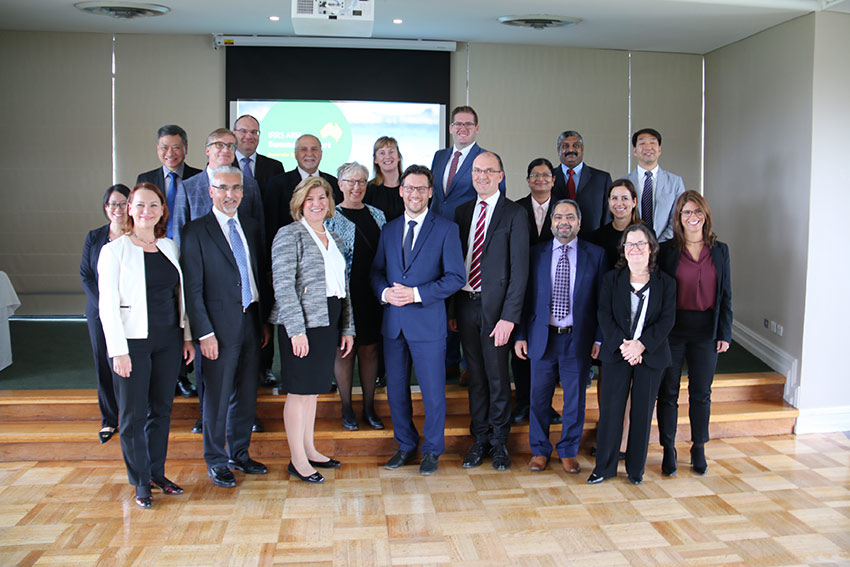The Integrated Regulatory Review Service (IRRS) team today concluded their 12 day mission to benchmark Australia’s framework for nuclear and radiation safety against international best practice.
The IRRS mission, facilitated by the International Atomic Energy Agency (IAEA), spent the last fortnight interviewing staff and reviewing ARPANSA and state and territory regulatory authorities’ practices.
This was the very first IRRS mission to undertake a comprehensive multi-jurisdictional review, including all six states, two territories and the Commonwealth, and this was identified as a good practice by the IRRS team. Besides this, the report noted Australia’s robust national safety framework and detailed several other good practices, while also identifying areas for improvement.
ARPANSA Chief Executive Officer, Dr Carl-Magnus Larsson, expressed his commitment in keeping the momentum of the IRRS going.
"I am very pleased with the diligence and transparency of all parties. The IRRS has enabled us to come together, and have a frank and open discussion not only about the national framework for radiation and nuclear safety, but also about the mechanisms for its efficient and effective implementation".
"The purpose of inviting an IRRS mission to Australia was to learn from our international peers with a view to continuously improve, and together, we achieved this goal".
"I am very grateful to the IAEA for putting together such an experienced and dedicated team. We welcome the recommendations and suggestions and are pleased we received recognition for what we do really well".
Good practices identified include:
- ARPANSA, together with state and territory regulatory bodies, has established comprehensive guidance that addresses existing exposure situations.
- ARPANSA has a well-developed strategy to compensate for the departure of qualified staff.
- ARPANSA integrates all types of risks in the management processes, the regulatory activities, and day-to-day work activities in a holistic and comprehensive way.
Many of the recommendations and suggestions confirmed or elaborated on the actions identified by Australia as a result of its self-assessments. Highlights include:
- The Commonwealth Government, in conjunction with State and Territory governments, should consider formalising the existing elements of the framework for safety into a comprehensive national policy and strategy for safety.
- The Commonwealth Government should make a firm commitment and take actions with specific milestones to address decommissioning of facilities and radioactive waste management by assuring the strategy, programmes, funding and technical expertise for safe completion are in place.
- The Commonwealth Government should ensure full implementation of the Code of Conduct on the Safety and Security of Radioactive Sources. This will continue to promote the safe and secure use of radioactive sources. This will ensure the safety and security of the domestic and international communities and fulfil Australia’s commitment to this important international instrument.
- The Governments of all jurisdictions should ensure that all parties, having accountabilities for safety of facilities and regulatory activities, have the necessary capabilities and human resources to carry out their responsibilities.
- Regulatory bodies in all jurisdictions should assess domestic and international experience related to nuclear and radiation safety and evaluate the need for updating their processes for authorization, review and assessment, inspections and regulations.
- ARPANSA should establish criteria to evaluate the effectiveness of licensee’s emergency exercises and assign roles and responsibilities to its staff during emergency situations.
Dr Larsson highlighted the tremendous effort put into the review, and next steps.
"I acknowledge the hard work of the states and territories, and extend my sincere thanks for their contributions and efforts which enabled this one-of-a-kind multi-jurisdictional review".
"We look forward to working with them and relevant Commonwealth departments to bring the IRRS recommendations into fruition. We will create an action plan to address these findings with full consideration of IAEA safety standards".
The IRRS report will be finalised by the IAEA over the coming months and provided to ARPANSA in early 2019, after which the report will be made public on ARPANSA’s website.



